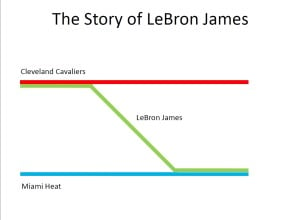A year after Stanford’s School of Engineering and Columbia’s Graduate School of Journalism first announced the creation of a new media institute, its first class of “Magic Grant” recipients are working on projects focused on integrating technology with journalism.
Established last year after a $30 million gift from the late Cosmopolitan Editor in Chief Helen Gurley Brown, the Brown Institute for Media Innovation plans to use approximately $300,000 each year to fund Magic Grants. These are awarded to teams of graduate or postgraduate students from Stanford and Columbia whose projects have “the potential change the ways in which media are produced, delivered, presented or consumed,” according to the institute’s website.
Three projects are currently underway, including the creation a personalized news television, dynamic maps of the news and a mobile publishing protocol for conflict reporting.
Each team has received about $100,000, according to Kelly Yilmaz, the program manager at Stanford.
“The charge of the institute is to co-evolve technology and storytelling,” said Columbia Journalism Professor Mark Hansen, the institute’s east coast director. “So the more we get Stanford engineering mingling with Columbia journalism, the better we are.”

Eigen News
The team that created Eigen News used the technological skills of Stanford students and the journalistic know-how of Columbia to create a prototype of a personalized news television.
“When we heard about the Magic Grant, we thought it would be really cool if we could do for news videos what Google News does for text news,” said David Chen, a fifth year doctoral student in electrical engineering.
Google News aggregates headlines from news sources, and then displays them according to a user’s interests. Similarly, after analyzing sixteen news channels, slicing them into individual stories and grouping these stories together by topic and relations, Eigen News provides viewers with a personalized playlist of the stories they might be interested in.
“This basically allows user interaction instead of the conventional sitting at home watching the news passively,” said one of Chen’s teammates, Huizhong Chen, a fourth year electrical engineering doctoral student.
Currently Eigen News exists as a website open for the Stanford and Columbia community. For Stanford students, a stanford.edu email address is required to register for an account.

Mapping the News
“Suppose you want to understand some complex topic — like a research topic or some complex area like the presidential campaign or the debt crisis in Europe. You could go to a search engine, but search engines are really great for retrieving those nuggets of knowledge,” said Dafna Shahaf, a computer science post-doctoral student. “They’re not so good for the big picture.”
Her solution was to create a program that would lie out the narrative threads of news topics as metro maps.
She used the story of LeBron James’ switch from the Cleveland Cavaliers to the Miami Heat as an example. The visualization for this story would consist of a metro line for the Cleveland Cavaliers, a metro line for the Miami Heat and then a metro line for James, which would first run tangential to the Cleveland Cavaliers and then run tangential to the Miami Heat.
Shahaf has been working on this idea since 2009, and created what she calls a “clunky prototype” for her doctoral degree. She said the money from the grant has definitely helped things move along faster, and allowed her to pay research assistants — two to work on the algorithmic part and one to work on the human-computer interaction and user interface end.
“To make it pretty,” she explained. “It’s way more important than I ever thought.”
Shahaf hopes to have a functioning website by the end of the year.
“For me, other than money, the best part about it is connections to journalists,” said Shahaf, whose project is the only one that does not have a bicoastal team. She said, however, that she Skypes with colleagues at Columbia about once or twice a month.
Dispatch
The third project is focused on creating a mobile app that allows “citizen journalists to exchange information and publish securely and anonymously,” according to the Brown Institute’s Fall 2012 Review.
The team consists of Stanford computer science doctoral students and Columbia journalism students.
The Institute
Columbia received $6 million to pay for the creation of a high-tech newsroom and was presented with architectural designs in August.
“The architects took inspiration not just from newsrooms but also incubator spaces, startup spaces, tech research and development spaces — spaces where you have this open plan,” Hansen said. “They were using this term ‘high-tech newsroom’ but really it’s this collaboration space where fellows and other people affiliated with the institute will be able to find time to come and work.”
The space is somewhere between a startup and an interesting newsroom, he said.
Yilmaz said a Brown Institute-designated space currently does not exist on the Stanford campus.
In order to maintain the bicoastal characteristic of the institute, quarterly review sessions will be held. According to Hansen, the next one will be in March at Columbia.
The institute is also looking to have a “bicoastal brainstorm” at the end of February involving journalism and engineering students and faculty, as well as journalism cultural institutions.
“We want to bring everyone together to riff on what are the interesting new questions and what we could be finding,” Hansen said.
Hansen’s long term vision for the Institute is for it to become a “vibrant, connected, genuinely bicoastal, a genuine hybrid that’s connected with journalistic and engineering industries.”
“[The Brown Institute] is an excellent opportunity, as demonstrated in this project, to show how technology can be used to reinvent journalism,” Chen said. “We hear a lot of stories about how newspapers are struggling with the conventional way of distributing information but technology could really propel them and transform how the journalism industry becomes in the next decade.”
